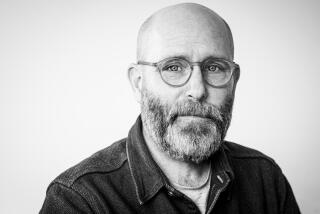Civil rights to right now
New York will get the photo show, but Los Angeles will get the photographer: Veteran Magnum photographer Bruce Davidson will discuss his 50-plus years behind the lens in a lecture and slide show Thursday at the UCLA Hammer Museum, including what is perhaps his best-known work: images from the civil rights movement, 1961 to 1965.
The 7 p.m. event is in advance of Davidson’s exhibition “Time of Change,” at Aperture Gallery in New York from May 18 through Aug. 2. Aperture will pair Davidson’s show with another on the civil rights struggle: “The Black Panthers: Making Sense of History,” photographs by Stephen Shames, the official photographer of the Panthers.
The Davidson show will include his famous shot of the Rev. Martin Luther King Jr. being mobbed by the press and a more intimate study of the civil rights-era friction between the races captured in the body language of two women, one white and one black, at a New York City lunch counter in 1962.
For his Los Angeles appearance -- part of the 3-year-old Aperture West Collaborative Lecture Series -- Davidson will bring “four -- well, maybe 3 1/2 “ trays of slides not only from the civil rights era, but also from other career-defining series, including his 1956 photo essay “The Widow of Montmartre,” on a 92-year-old Parisian woman who knew Gauguin, Toulouse-Lautrec and Renoir; “The Dwarf”; “Brooklyn Gang”; “Subway,” his first major series in color; and his portrait of Spanish Harlem, “East 100th Street.”
In a telephone conversation, Davidson says he used to be able to boil down his life’s work into “three trays, 45 minutes.” But his recent journey back through his archives, discovering photos that have never been included in his numerous exhibitions and books, has caused him to expand his trays.
“I don’t want to make it too pat for myself; I don’t want to sound like a used-car salesman at a national convention,” says the Evanston, Ill., native, who worked as a freelance photographer for Life magazine before joining Magnum Photos.
“I’ve been going through hundreds and hundreds of slides -- it’s boring, looking for maybe one picture that I’ve overlooked. It felt real good to do it.”
Davidson will also include slides of more recent work, including photos for a series he created for Esquire magazine that focused not on social upheaval, but pastrami.
“After 9/11 they wanted me to do something on America that was sort of positive, but I didn’t want to do a sentimental trip to Americana,” he says. “So what I decided to do was spend a month at Katz’s Delicatessen in New York, where they sell 50,000 pounds of hot pastrami a year. I wanted to photograph people eating pastrami, because when you eat hot pastrami, you are in a peaceful frame of mind.”
Davidson also has discovered something new in his photo of the World Trade Center towers, taken before 9/11. “At the time I took it, there was a sort of sneaking, ironic smile to these metal boxes that were looming into the air -- they were money boxes,” he says. “But after 9/11, since you can see the lights inside, they became memorial candles.”
Asked if he has a self-portrait among his photos, Davidson admits that he occasionally shot himself during a boring night in a motel room, but he has no plans to do it again. “It’s no longer interesting,” he says. “Twenty-five or 30 years ago it would have been, but I didn’t know how cute I was then. Now I’m just another bald-headed guy.”
That’s not how Phillip S. Block, deputy director for programs and director of education for New York’s International Center of Photography, would describe Davidson. “The stories that he tells in photos have a lasting place in our culture,” Block says.
“Bruce is, to a certain extent, the product of a changing moment in the world of major media,” Block continues. “Bruce started his career really at the peak of magazine journalism. All of a sudden, the magazine started to decline as people started to increase their diet of TV.
“Now, we live in a celebrity culture. If a photographer works for a magazine, it’s grip-and-grin, ‘Photograph Hugh Grant for us.’ Bruce was steeped in that last moment when one could be expansive in their storytelling.”
Though noted for his ability to win the trust of human subjects, these days Davidson is more interested in the life of plants. In recent years, he has been at work on “The Nature of Paris” series, shot for an exhibition in that city.
“It’s about how nature is invisible to us,” he says. “We see the Eiffel Tower, but we don’t see the tree that’s next to it.”
Davidson says he would like to photograph the exotic plants of Los Angeles someday. He moved away from photographing social unrest in part because of his age: “I couldn’t photograph the Iraq war now because I can’t run that fast. “ But, he observes, “I can find Iraq in a tree.”
He’s still not ready for digital photography. “[I] like to load my own film -- I like to hear the click. When I’m in the darkroom, it’s like a holy experience. I have Maria Callas on the CD, and it’s magic when the image comes out.
“I’m not contemporary, I’m classic. I’m a dinosaur, but I still feel like a photographer.”
*
Bruce Davidson
Where: UCLA Hammer Museum, 10899 Wilshire Blvd.
When: 7 p.m. Thursday
Price: Free
Contact: (310) 443-7000, www.hammer.ucla.edu
More to Read
The biggest entertainment stories
Get our big stories about Hollywood, film, television, music, arts, culture and more right in your inbox as soon as they publish.
You may occasionally receive promotional content from the Los Angeles Times.










